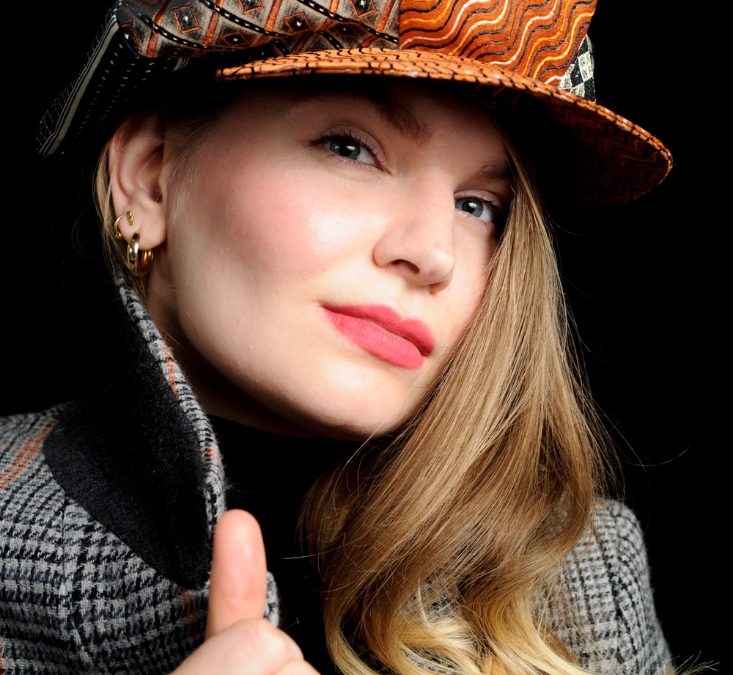
by Purba | Feb 10, 2022 | Shout out |
Mari Michel, an elegant sustainable brand, founded in 2020 by Mari Michelson has a unique story to tell the world. Guided by the sense of beauty embedded in natural materials and with a mindset aimed towards sustainability, this brand uses silk from second hand mens ties and turn them into Fair Hair Ties. Today Kazi Purba, the Founder of Fashionnovation, takes the pride to introduce you with one of the most unique brands that we have covered till now! Let’s hear from Mari Michelson’s journey towards sustianability with her brand.
Ms. Mari Michel, you have a very unique story. Please tell us something about yourself.
I was born in the 90s in a small country of a million people in Northern Europe, just a few years after the independence from the Soviet Union. The resources at the time, in Estonia, were scarce – priority was on importing the necessities. The clothes were very basic and there was not much of a choice. If you wanted something special, you had to make it yourself. That scarcity sparked creativity and showed an abundance of materials, which I took advantage of by upcycling them to one-of-a-kind garment pieces.

Mari Michelson with her OHOV cap made of silk collected from second hand men’s ties. Photo courtesy: Mari Michelson.
In our countryside house, we had a cabinet full of old Burda magazines from a grandmother, that I had never met. These were filled with silhouettes and colour combinations, that looked vintage and out of the ordinary. I would trace some of these silhouettes into my fashion folder and exaggerate the form and some of the features in order to play around and make my own designs out of it. It was through books and magazines that I discovered a lady, that perhaps, has influenced my understanding of fashion the most – Vivienne Westwood, of course. For me, I could relate to the rebelliousness, outrageous ideas, inventiveness, and diverging from the norm, that she so much represented.
At 16 and inspired, I moved to England alone to study Fashion Design. It was there, that I saw the mass production side of the business for the first time and became disillusioned about the sustainability factor in the garment business. I started feeling like it was not a place I wanted to contribute to. So I went on to leave fashion behind and enter a new career in business and software.
In 2020, things changed. With pandemic allowing more time to revaluate what I really want to do in this world, I made the decision, to really go for my dream – but this time, on my own terms. I decided not to become a fashion designer, where trends change with every season, but sustainable apparel and accessories designer, where quality matters and not quantity.
What is the story behind your brand?
Mari Michel was born at the end of 2020 in the Netherlands, but the ideas for it had been accumulating for a lifetime.
The first product grew out of an idea of using men’s silk ties as a material to create expressive hair accessories. These accessories are called Fair Hair Ties.
The metaphor for Fair Hair Ties comes from my own personal experience – I came out of the office where I worked as a software engineer, to follow my passion of designing sustainable apparel & accessories that give people a tool to express themselves.
The office environment is very standard, white and concrete, empty of expression – traditionally not a place one would feel free to show one’s true self. We have gradually been moving out of the cooperate style in the business environment, when I look around, I can rarely spot a man wearing a suit and tie for work. Our societal understanding has been changing a lot, especially in the past two pandemic years.
I find it very important, that no matter the environment, you should always be able to express yourself. For me that goes very deep into the core – to my scientific high school, I used to sport a Little Prince costume with a briefcase in hand, where Jimi Hendrix’s face was painted on.

Mari Michel’s signature accessories made of silk from ties. Photo courtesy: Mari Michelson.
Clothing & accessories is a great way of expressing yourself. Often even therapeutic, because what you put out can sometimes help you to gain confidence inside. Mari Michel is all about giving tools for self-expression! That’s why we even use the phrase ’Express Yourself’ as our slogan.
What motivated you to establish that?
I feel very strongly about already produced high-quality materials that are constantly being discarded in the world of consumerism, f.e. silk, fur, linen, leather. Natural materials that take a lot of resources to produce, but when produced, have a very short lifespan because the item they have been produced into goes out of fashion.
The first material that I chose for my current designs, is silk. I chose silk because I love it. There simply is no other material with comparable beauty & health benefits. I feel it is my mission to design tools for people to express themselves, that are not just aesthetically pleasing, but also sustainable and healthy.
What’s your product range?
At this point, we are focused on silk from men’s ties.
We make Fair Hair Ties, which are both hair accessories and bracelets in three different designs with unlimited colours and patterns, each one unique.
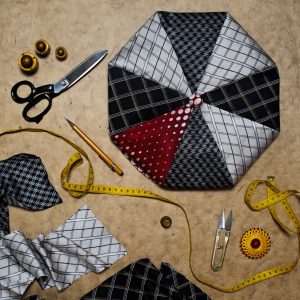
Mari Michel’s signature Ohov cap made of silk from ties. Photo courtesy: Mari Michelson.
Our most recent product is the Ohov cap – a hat made fully from silk fabric. Each cap is unique. The pattern and colour combination make each a true statement piece.

Mari Michel’s signature Ohov cap made of silk from ties. Photo courtesy: Mari Michelson.
The design of the Ohov cap is paying homage to the original baker boy cap. Baker boy cap origins go all the way to the 16th century, where Queen Elizabeth I of England sought to stimulate the Irish and English wool trade, by passing an act obliging males over six years of age (except for nobility and persons of degree) to wear caps of wool. This law further established the cap as a staple of Irish/English working-class clothing culture.
By making it from silk, which is a premium fabric, and making it a colourful unisex statement piece, we are contradicting the idea of its origins.
We also offer a style guidance service, where I help people to find their authentic style in one-on-one sessions.
What special do you offer to your customers through your brand?
All the materials that we use, have been transformed from one item to another, but the story stays, the feeling remains, the soul is still in the object.
These items have a sense of character.
Wearing it is special.
You really buy a piece that is just for you.
Every customer is special, and they get their special item.
And I never make anything that is standard. I am always looking for something new, a twist on things. I look for inspiration for the future from the past. Having something old, that has been stitched into the fabric of our culture, is something we have relied on, it is comfortable and gives a certain emotion to people. What I like to do, is to take a part of it and transform it into a new concept.
Does your brand care about environment and sustainability? How are you promoting sustainability with your works?
Before I went to study fashion, I never questioned myself about making sustainable choices. I was lucky to be brought up in a family that had a reasonably sustainable lifestyle and in a culture, where feeling being part of nature was immensely integrated into society. I thought that everybody takes care of nature as it would be of their own family member. When I went abroad for the first time and got to have a closer observation of the global fashion industry, I saw that sustainability in fashion is far from ‘of course’. The leverage was on profit.
I think profit should never be leading to anything we do as people.
The real energy behind projects comes from mission and passion.

Mari Michel’s signature accessory made of silk from ties. Photo courtesy: Mari Michelson.
Our mission at Mari Michel is to make expressive accessories and apparel with sustainability as an underlying value in everything we do. We re-use high-quality natural materials, that have a long lifespan. Every item we produce is unique, which is one of the most sustainable ways of production. There is no surplus of materials or products that go to waste. Our production is based in Europe, we offer our products at fair prices and hold transparency as a key value in communication.
What are your future plans with your brand?
Expanding on our current concept and adding more products from sustainable silk. Even more so, we want to move onto new materials – there are a lot of other discarded materials, that we have been developing ideas about.
We are curious about modern materials that are fully compostable and are open to collaborations in this area.
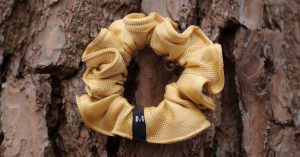
Mari Michel’s signature accessory made of silk from ties. Photo courtesy: Mari Michelson.
The next phase is going from accessories to apparel collections.
It is important for us to interact with the community, which is why are making stories that are relevant in today’s fashion industry and will be continuously giving out new topics to discuss with a humorous undertone.
The goal is to keep creative juices flowing and not to be overly fixated on predicting the future, rather let our values and passion drive us.
You can read more about how Mari Michel addresses sustainability here:
https://marimichel.nl/pages/sustainability-1
You can read more about silk properties here:
https://marimichel.nl/pages/silk-properties
You can read about our style guidance service here:
https://marimichel.nl/pages/style-guidance
Website: marimichel.com
Instagram: http://instagram.com/bymarimichel
Facebook: https://www.facebook.com/bymarimichel
LinkedIn: https://www.linkedin.com/company/marimichel
You can also read this premium article on the 21st century fashion!
Lili: A Sustainable Brand for Upcycled Jewelry
If you want to know about M&L Creative, the Number One Choice for Sustainable Brands, you can read it here!
If you want to read about another wonderful woman named Rebecca who’s working for her fashion brand RebeccaRowe.ca to make women feel confident, in this link.
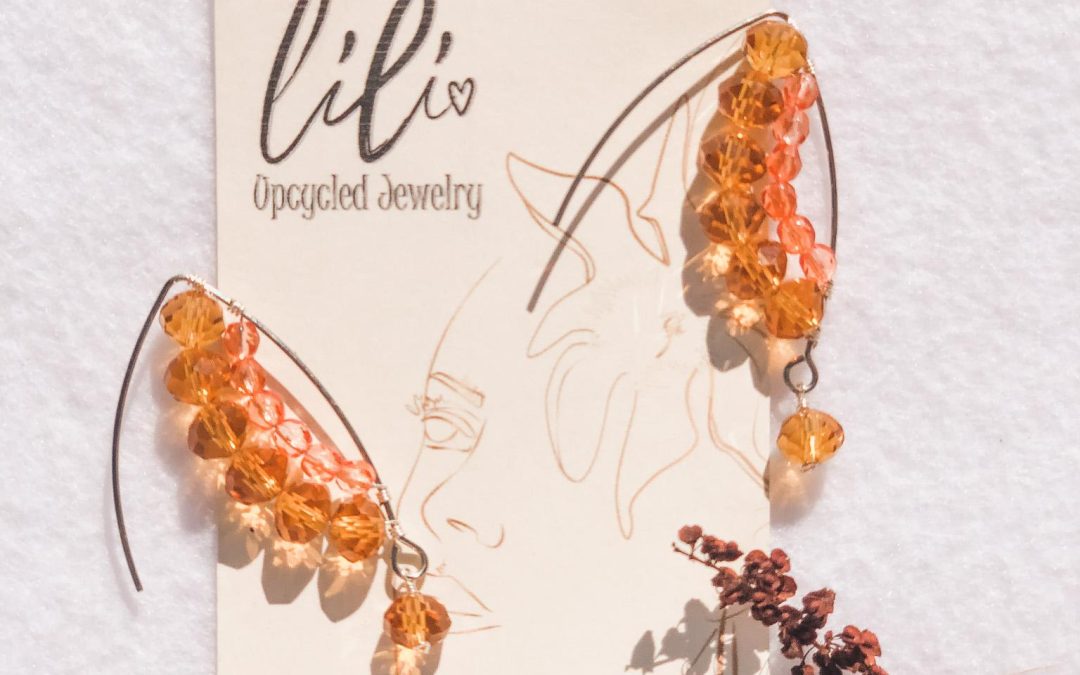
by Purba | Jan 30, 2022 | Shout out |
If you want to know about M&L Creative, the Number One Choice for Sustainable Brands, you can read it here!Griselda is the founder of lili, a brand of upcycled jewelry that invents unique pieces reusing discarded jewelry materials based in New York. Today along with Kazi Purba, we will explore the initiatives of Auda and her plans with lili in Fashionnovation’s exclusive interview.
Ms. Griselda, please tell us something about yourself.
My name is Griselda. I was born and raised in Honduras. I’ve been living in Ithaca, New York for 5 years.
I am a content creator for Slow Fashion Movement (@slowfashion.movment) and the team leader for the LATAM local group (@slowfashionlatam) which is part of Slow Fashion Movement.
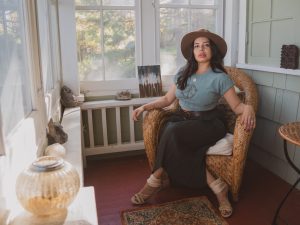
Ms Griselda, the founder of ‘lili’, a brand of upcycled jewelry that invents unique pieces reusing discarded jewelry materials. Courtesy: Griselda.
We have 20 local groups around the world!
Also, I have a platform on Instagram to help raise awareness about the negative impacts of the fashion industry ( @responsible_forwardfashion)
Starting a new life in another country is not easy — at least it hasn’t been for me. Being away from my family and friends is undoubtedly the most difficult thing. And then, leaving my job and starting a new life ….
I can barely describe in words how important lili is for me, as my first entrepreneurial venture. I am filled with hope, enthusiasm, and excitement!
What’s the story behind your brand ‘lili’? What drove you to establish it?
When I discovered the negative and destructive impact of the fashion industry, I decided to create a platform to help raise awareness about sustainable fashion. With this platform, the idea of lili was born: a brand of upcycled jewelry that invents unique pieces reusing discarded jewelry materials. By bringing unused pieces to life again, we lengthen the life cycle of materials and prevent them from ending up in landfills.
I also want to create jewelry from scratch, with materials that I find in second-hand stores or with vintage components. In this way, I can create my own designs and be able to grow!
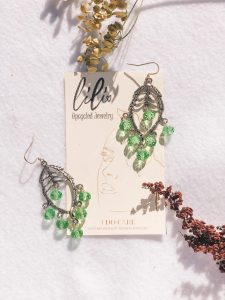
Creative and sustainable products of lili. Courtesy: Griselda.
I have always loved jewelry. A good friend taught me basic skills, and since then I have been learning on my own. Up until a few months ago I have done it just for myself, or to give as gifts, but now I am doing it with purpose, to help the planet!
What’s your product range?
As a jewelry lover, I adapt repurposed materials in earrings, necklaces, bracelets, rings, and bookmarks!
I just follow my muse when it comes…!

lili, a brand of upcycled jewelry. Courtesy: Griselda.
Since it’s an upcycled brand, every piece is unique. For example, my first collection was made with materials that I had on hand, with beads from jewelry that I no longer wore.
Recently I got a donation of unwanted jewelry. I can’t wait to upcycle them!
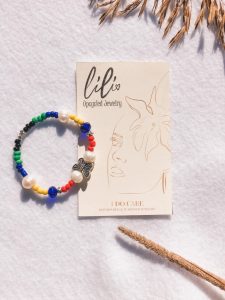
Creative and sustainable products of lili. Courtesy: Griselda.
What is something special you offer to your customers through your brand?
With my brand, I try to inspire others to consider giving a second life to their things, while looking good, and feeling good with unique pieces. My aim is to REPURPOSE & RELOVE!
How are you promoting sustainability with your work?
Of course, environment and social impact are the core values of my brand!
Fashion is one of the least regulated industries globally. It has an enormous climate, labor, and material impact. I aim to increase awareness and conscious consumption through my brand.
I believe that the fashion industry needs far-reaching systemic change in order to tackle poverty, inequality and environmental degradation.⠀⠀⠀⠀⠀⠀⠀
What are your future plans for your brand?
I am working on a business plan. For now I am on Instagram, Facebook, Depot, and Poshmark. But I hope to open an Etsy shop in the near future.
Here are the links to find Griselda and her brand ‘lili’!
My Depop: https://depop.com/lilianpagoada
My Poshmark: https://posh.mk/rS7SuHAaUmb
Instragram: https://instagram.com/lili.upcycledjewelry?r=nametag
Facebook: https://www.facebook.com/liliupcycledjewelry-102997114911719
Jana’s Amber Design House: A Brand That Is More Than a Meditation
Mari Michel: A Brand That Rescues Silk From Second Hand Men’s Ties and Turns Them Into Unique Accessories
If you want to know about M&L Creative, the Number One Choice for Sustainable Brands, you can read it here!

by Purba | Jan 14, 2022 | Shout out |
National Institute of Fashion Technology Hyderabad known as NIFT Hyderabad is an institution of Fashion, Design, Technology and Management located in Hyderabad, India.
As a continuation of Fashionnovation’s mission to unite and uphold all the fashion institutes of the world, this is our exclusive feature about NIFT Hyderabad.
NIFT was established in 1986 and is the pioneering institute of fashion designing that has been providing quality education in the field of textile and apparel industry. NIFT Hyderabad offers UG, PG and continuing education (CE) programs in design stream to students. Admissions to both UG and PG courses are done through a common entrance test conducted by NIFT followed by a situation test. Selection takes into account the performance of the entrance test, situation test and GD/ PI.
Location:
NTFT Hyderabad is one of the 16 campuses of NTFT, which is located at Madhapur, the heart of IT hub of Hyderabad.It is near the Hitec City metro station.The exacy location of that institutions is: Opposite Hi-tech City, Cyberabad Post, Madhapur, Hyderabad, Telangana, 500081, India.
Courses:
Almost 8 courses across 4 degrees are offered by the NIFT,Hyderabad.4 degrees are given below:
# B.Des(Bachelor of design)
Duration :4 years
Fee:88K(Annually)
Study :Regular
#B.F.Tech(Bachelor of Fashion Technology)
Duration :4 years
Fee:88K(Annually)
Study :Regular
#M.F.M.(Master of Fashion Management)
Duration :2 years
Study :Regular
#M.Des(Master of design)
Duration :2 years
Study :Regular
Under the degree of Bechelor of design there have 5 courses:
- Bachelor of design in accessory design
Fee:INR 88K (Annually)
Seat:(30)
- Bachelor of design in fashion design
Fee:INR 88K (Annually)
Seat:(30)
- Bachelor of design in fashion communication
Fee:INR 88K (Annually)
Seat:(30)
- Bachelor of design in knitwear design
Fee:INR 88K (Annually)
Seat:(30)
- Bachelor of design in textile design
Fee:INR 88K (Annually)
Seat:(30)
Under the degree of Bachelor of Fashion Technology there have only one course
- Bachelor of Technology in Apparel Production.
Seat:(30)
Scholarships:
The financial strategy of the institute places student development as a key priority.A considerable sum from NIFT Development Fund is put to use in this core area every year.To maximize the potential of its students, the institute’s Means-cum-Merit Financial Assistance scheme allows students from humble backgrounds to avail subsidized tuition fee.Determined by the parental income, students can fall into three slabs of monetary assistance. Many students in the past have benefited from.Further, many leading organisations from the apparel sector have come forward to encourage NIFT students in their academic and creative quest. Pioneers in the related field have instituted awards & scholarships namely ITC, HomeShop 18 etc. to recognize and appriciate academic brilliance.This provides motivation to the students, from their very first year of study.
NIFT Means-cum-Merit Financial assistance scheme:
1.Under this scheme financial assistance to undergraduate students shall be provided as follows:

Chart of Financial assistance from NIFT
2.Under this scheme financial assistance at Central level shall be provided to post graduate students at the centre:

Chart of Financial assistance from NIFT Hyderabad
Student facilities:
1.Hostel facilities are available only for girl’s students.
2.Semi furnished rooms including study table,chair,inbuilt selves with wardrobe shutters are provided.
3. Health insurance card will be issued to every students,where they can utilise the medical emergency services.
4. Recreation room and air conditioned gym facility are available for the students.

5. Students psychologist will also be available on campus to counsel the students.
6. Indoor sports facilities including Tennis court, Basket Ball court,Throw Ball court,Volley Ball court,Cricket,Table Tennis is available for students.
7. 24 hours security and surveillance facility and 24 hours wifi is also provided in NIFT
Extra-curricular activities:
NIFT Hyderabad allows the fellow students to take part in different kinds of clubs and also arrange varieties of fests which also helps to buid interaction with sister campus.
The ‘Fashion Spectrum’, the annual fest of the Institute gives students free rein to showcase their talent.The best of the best from all campuses also get to compete with each other at ‘Converge’, the Sports and Cultural National Meet of NIFT.

Some of the clubs are:
- Cultural Club: The Cultural Club has students from different academic years and departments, with a common interest in cultural affairs. Various events are organised, inviting artists and performers for cultural interactions.Spectrum, the annual fest of the Institute, is coordinated by the Cultural Club.The fashion team, the dance team, the music team etc. work in coordination with the club, which usually has one or two faculty mentors.
- Social and Environmental Club: The Social and Environmental Club of NIFT hosts different competitions and events celebrating multiple festivals both Indian(like Onam, DusheraMela, Mahalaya) and International (like Halloween).Besides celebratory events, the club also hosts numerous social events like blood donation drives, donation camps and NGO visits to sensitise students toaspects of socially inclusive growth. Health Week is a special initiative taken by the club, during which various camps are put up and free medical aid and check up is provided to the students and faculty.
- Sports Club: Sport facilities including Tennis court, Basket Ball court,Throw Ball court,Volley Ball court,Cricket,Table Tennis is available for students.The Sports Club promotes all activities related to Sports.
- Literary and Dramatics Club: Debates, discussions, poetry, creative writing, organizing and management of different kinds of events are arranged by this club.The Club hepls to find and explore new ideas and creatively criticizing existing ones.
There are more clubs like Photography club,Adventure Club etc in NIFT Hyderabad.We know,extracurricular activities complement the academic curriculum.The mentioned Clubs in NIFT encourage the students to develop social skills and encourages to work in a team to achieve a shared goal.
Position it holds in fashion world:

- It ranked 5 for Fashion Design by the Week 2020
- It ranked 6 for Fashion Design by India Today 2020
- It ranked 7 for Fashion Design by Outlook 2019
Placements:
NIFT Professionals has immense creative mind a country can offer,who go through a very stimulating and challenging academic schedule that sharpens their faculties and prepares them to face any challenge in the ever changing fashion world.
NIFT Industry and Alumni Affairs unit facilitates on campus placement for graduating students which enables them to start their career in challenging positions.
NIFT follows a centralised placements process in which recruiters need to register themselves to participate in the placements drive. Companies can offer jobs to NIFT students in two ways;on-campus placements drive or pre-placement offers.
Some of the highlights of NIFT Hyderabad placements 2021,collected from verified Shiksha reviews,are listed below:
- During placements 2021 drive, nearly 80 per cent of BDes students got placed with the highest salary package of Rs 6 LPA
- Approximately 80-90 per cent students of MFM were offered placements at NIFT Hyderabad. The highest package for MFM programme was Rs 6 LPA
- NIFT Hyderabad offered 70 per cent placements to BFTech students with the highest salary package of Rs 5 LPA.
During NIFT Hyderabad placements drive 2021,students got the opportunity to work and share their ideas with the top designers as well as retail brands. Some of the top companies that offer jobs to the students of NIFT Hyderabad are:
Blackberrys,Decathalon,Monte Carlo, Bata,Artex Apparels,Cactus Menswear Fashion Pvt. Ltd etc.
NIFT allows the students to explore the merger of the creativity and new ideas.It’s leading institutions towards a great fashion revolution.It’s bringing up the best from the students and encouraging them to nourish their inner capabilities.Students who are creative and have fascinations in styling and creating new designs should admit themselves in NIFT.
Sources:
1.https://nift.ac.in/downloads
2.https://www.collegedekho.com/colleges/campus-nift-hyderabad
3.https://www.shiksha.com/college/national-institute-of-fashion-technology-hyderabad-madhapur-45451/placement
Rabeya Begum Mishu
Ripa Sunjida
Toukir Ahmed Sifat
The authors are from
Department of Textile Fashion & Design,
Bangladesh University of Textiles (BUTEX).
You can also read our article about Auburn University’s AMDA, their activities and goals!
Auburn University’s AMDA, Their Activities & Goals
You might also be interested to read about Fashionnovation Your Mentor Talks’ First Episode with Ms. Ummey Hani Barsha!
As you’re interested in fashion design learning and activities, you might also be curious about how much a fashion designer makes hourly, daily, monthly and yearly. To know that read this article.

by Purba | Jan 12, 2022 | Shout out |
Auda Sakho is the mind and founder of Redress Laboratory, a label with origins in the UK, France and India. Redress Laboratory is born from her simple and long-term philosophy around re-using and re-inventing clothes. Her style is influenced by a passion for disrupting the linear production model, architectural minimalism and sustainable living. Today along with Kazi Purba, we will explore the mind of Auda and her plans with Redress Laboratory in Fashionnovation’s exclusive interview.
Tell us something about yourself.
I’m Auda Sakho, the founder of Redress Laboratory. I’ve always upcycled clothes and old materials as a hobby. Even whilst studying and working as a professional designer, I continued to transform discarded materials into unique, sustainable clothing.
Everything I create conveys a message. I believe that clothing is integral to visual storytelling.
Whilst enjoying handpicking and designing clothes, I am equally interested in engaging with my customers. I want to establish an emotional connection between my brand and my consumers.
.

What’s the story behind your brand? What motivated you to establish that?
Following work in the world of mainstream fashion and costume design, I recognised the need for a fashion label with sustainability at its core. I can only do Fashion if Its sustainable.
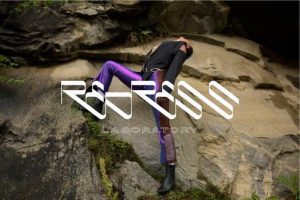
Circularity and sustainability are integral to Redress Laboratory’s ethos. Our team is passionate about making playful and unique clothing without harming the planet. initiate, invent, share, lease, reuse, repair, refurbish, recycle and finally upcycle existing materials and products for as long as possible.
What’s your product range?
Redress Laboratory is an environment conscious, Up cycled Fashion brand and services. Our products range from clothing such as trousers, coat, tops to accessories, handbags, believe that everything can be reused and upcycled.
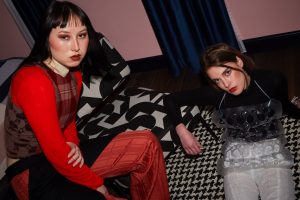
4. What special do you offer to your customers through your brand?
In our search to minimise waste as much as possible, we have put in place a waste take back scheme.In practice, it implies reducing waste to a minimum by collecting existing materials from individuals and customers and they are granted a voucher card in exchange for new items. I think it’s important to bring an emphasis on a circular loop model, so when a product reaches the end of its life, its materials are kept within the economy wherever possible.
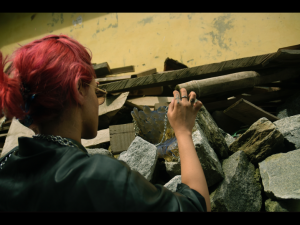
These can be productively used again and again, thereby creating further value. Alternatively, also provide Revamping Service and Sustainable workshops amongst our community.( please see preview of our website)
4. Does your brand care about environment and sustainability? How are you promoting sustainability with your works?
Redress Laboratory remains eco-conscious in every aspect of the brand, for example:
- Redress Laboratory products are made entirely from reclaimed and recycled fabrics. By using discarded materials, have established a circular supply chain which directly regulates natural resources, saves energy and minimises the amount of waste produced.
- Every stage of the production process ensures minimal environmental damage. Redress Laboratory is constantly reviewing the way of operation to remain conscientious about our social responsibility.
- The long term goal of Redress Laboratory is to rethink, research and transform fashion. Sustainable fashion will establish an industry responsible for its environmental impact.
What are your future plans with your brand?
The long term aim with Redress Laboratory is to create and differentiate the brand of products by developing more eco-friendly practices and leveraging technology to make clothing production and consumption more sustainable, from the use of plant-based textiles (bioplastic) and bacteria-based dyes to leveraging a blockchain-based supply chain to increase transparency.
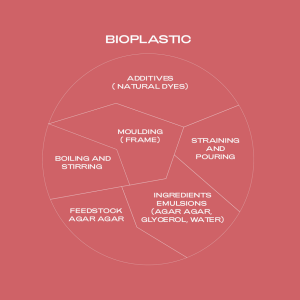
Transparency is at the core of the brand; all the production process information will be provided when a customer purchases our products. They will also have an insight of the breakdown cost of their products, detailing every aspects of production cost and margins for a greater transparency.
Redress Laboratory has a wonderful team where Shreya Malhan is the textile curator, John Moutaris is the videographer and Thomas Hadas is the Visual Developer of the Kickstarter Campaign.
Redress Laboratory is launching their website on 1st of February 2022. They are also launching their Kickstarter campaign on the 1st of February 2022. So, stay tuned to see amzing stuff from them.
Instagram: @redresslaboratory
Facebook: Redress Laboratory
Tiktok: Redresslaboratory
LinkedIn: Redress Laboratory
Website preview
https://redresslaboratory-2.myshopify.com/?_ab=0&_fd=0&_sc=1&key=82f9d9ec9f3e817ff8fb97ce218b710a040dfd99f375d0deb2e29ac50113baee
Lili: A Sustainable Brand for Upcycled Jewelry
Jana’s Amber Design House: A Brand That Is More Than a Meditation
VeNove: The Brand That Makes Comfortable, Stylish and Unique Dresses for the Pregnant Women With Love
If you want to know about M&L Creative, the Number One Choice for Sustainable Brands, you can read it here!
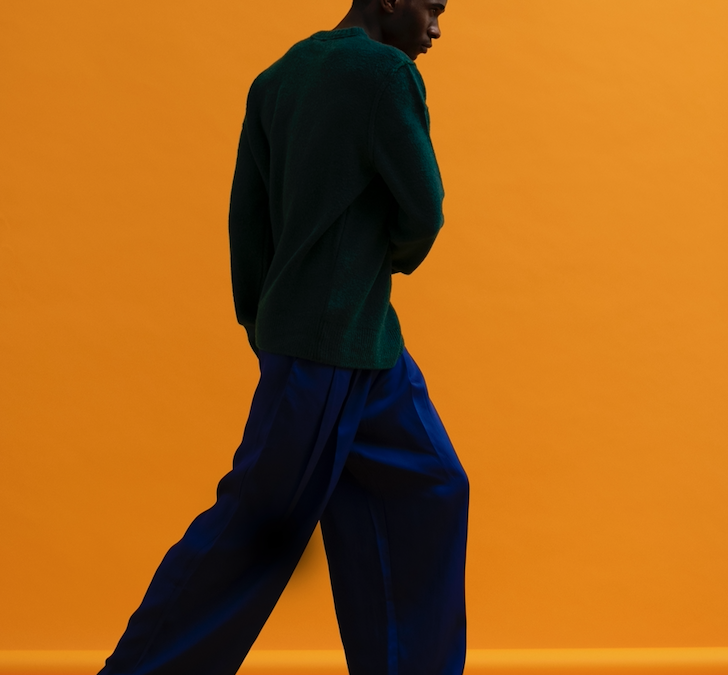
by Purba | Jan 9, 2022 | Shout out |
Fashionnovation is on a journey to introduce you with unique, sustainable, rising fashion brands, start ups and the masterminds behind them. As the continuation of our journey, Kazi Purba explored V’LE Magazine and the mind of its founder through some questions. In our today’s exclusive interview, we take the humble opportunity to introduce you with Bof Setlhare, a visionary founder of V’LE, a start-up based in New York, United States. Having a background in fashion working as a fashion model, keeping the idea of ‘fashion with purpose/fashion for good’, he is using his skills in fashion to manifest that idea to life. Today we will listen to his story of building up a network called V’LE to promote sustainable fashion around the world.
What is V’LE?
V’LE Magazine is a digital magazine focusing on sustainable and ethical fashion. We share academic insights related to sustainability (or lack thereof) in the fashion industry. We noticed that when people think of sustainability in fashion, there’s more emphasis on environmental and social aspects. So, the whole point of V’LE is to highlight other aspects that are not discussed in the mainstream conversations. We discuss political, economic, social, technological, environmental, and legal aspects. In a way, it’s a 360° approach because we recognize the interaction of fashion with all of these aspects. Another core element is our creative side. We do editorial shoots and relate them to the topic so that the articles aren’t too wordy. Lastly, we are a directory for sustainable fashion brands. On our Features page, we have sustainable brands with varying styles for consumers looking to buy more sustainably.
Why did you establish this platform? What was your drive?
I have a background in fashion working as a fashion model. During the covid lockdowns, many industries were going through sudden shifts and that got me thinking about this idea of ‘fashion with purpose/fashion for good.’

Bof Setlhare, the founder of V’LE as a fashion model. Courtesy: V’LE Magazine.
The next step was to figure out how I can use my skills in fashion to bring that idea to life. As a fan of academia, I realized the need for educational resources that promote awareness specifically when it comes to sustainable fashion.

Bof Setlhare posing for a photoshoot. Courtesy: V’LE Magazine.
Who are your audience?
The primary audience is fashion brands and consumers. The great thing is as niche as V’LE is, we cover a broad spectrum of subjects. People in tech, social services, psychology, environmental activism, federal agencies, etc., can find something they relate to. So basically, our audience is anyone interested in conscious fashion and longevity in fashion.
Please share some of your memorable incidents with V’LE.
I was happy when the website surpassed 100 visits lol. To be honest I can’t really single out any memorable incidents given our small size. I literally remember everything we’ve done. Being able to reflect on our operations and see how the process is different for every article, and just be grateful to have worked with amazing people. It’s a special feeling knowing that people (photographers, models, collaborators, and our audience) are giving us their time considering we’re a small startup.

Courtesy: V’LE Magazine
What is sustainability according to your view point? Can we really assure a sustainable future of fashion? How can V’LE support this grand endeavor?
There are 2 ways to look at sustainability; the brand side and the consumer side. The brand side focuses on the supply chain activities (from sourcing raw materials to point of sale) that prioritize sustainability and ethics. On the consumer side, it’s about information and resources that promote conscious consumption of fashion items. It’s also important to note that sustainable fashion isn’t a new thing and many cultures across the globe have been practicing it knowingly/unknowingly. It’s just that this conversation is becoming mainstream mainly due exponential growth of fast fashion and the urgency for climate change action. Sustainable fashion looks different for everyone depending on geography, culture, financial and economic constraints. The idea is to look at areas within one’s life and what role can they play to push the movement forward.
What are your future plans with V’LE?
In the future, we want to incorporate other elements such as e-comm with our own collection. Would also love to launch something in physical form rather than being exclusively digital. Creating a space rich in music, arts, culture, and fashion where people can come and interact.
Website link
V’LE Magazine
Social media links
IG- https://www.instagram.com
Facebook- https://www.facebook.com/VLE
LinkedIn- https://www.linkedin.com/company/vlemagazine
Tiktok- https://www.tiktok.com/@vlemag
Twitter- https://twitter.com/vlemag




























